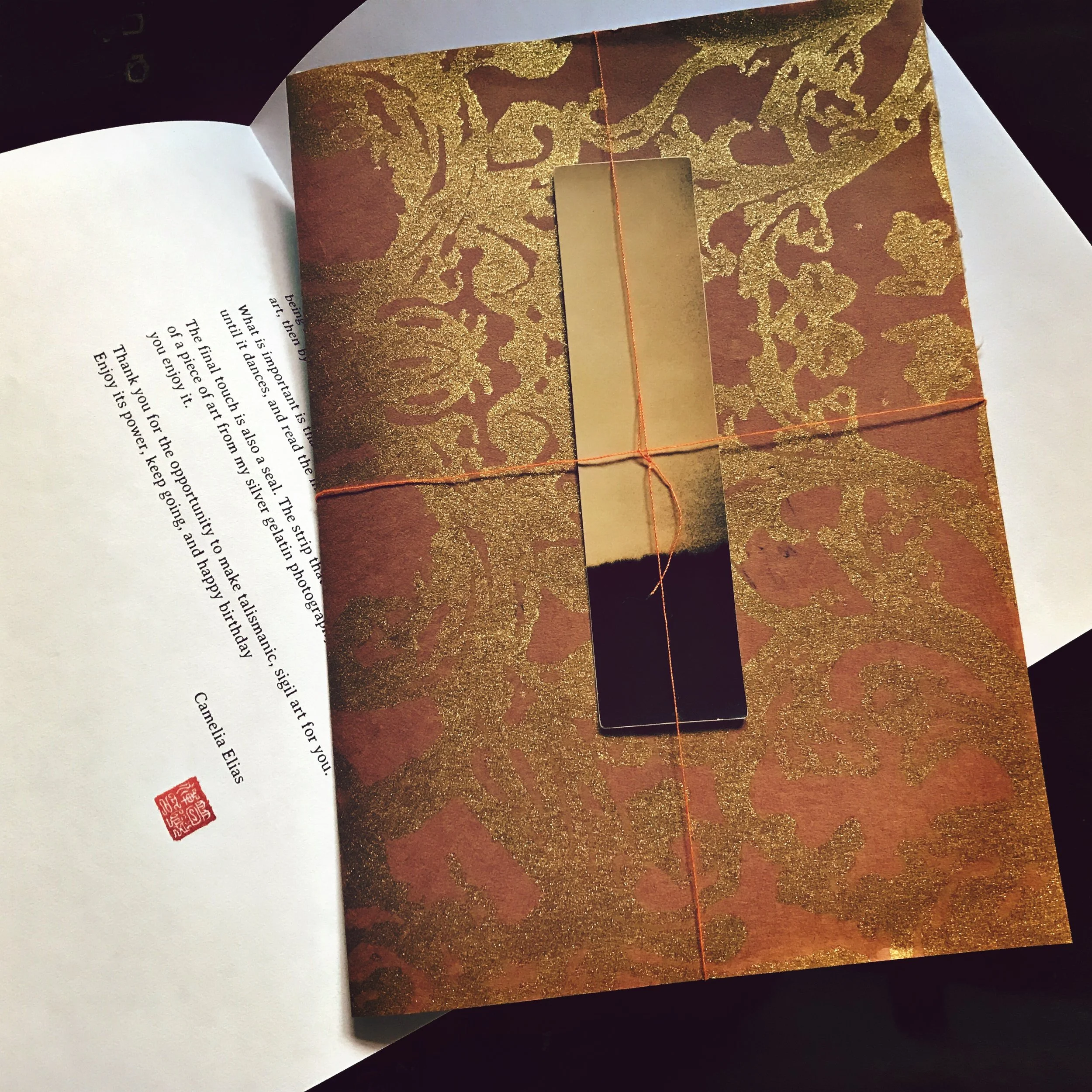
sigils
Encoding desire into glyphs on paper as a means of self-enchantment is an old folk magic practice. I craft sigils that have the function of empowering people so they can act in accordance with their true will. ‘How is this different from art, or the other related art you make?’ some people ask me. It’s not. Except for a few conditions.
Read about about this practices below, or get a custom sigil.








As a calligraphist, I like to play with ink and glyphs. I craft sigils, that is to say, I encode wishes and commands into a magical formulation. The simple proclamation, ‘I love you,’ is one such. Giving the words ‘I love you’ an image makes the utterance more powerful, bringing its performative and perlocutionary function to manifestation faster than you’d think.
But what’s in a sigil beyond the expectation that it works magic for you? What’s in a talisman beyond the expectation that it channels star power for you with view to protect, gain success, or influence an outcome?
It’s not difficult for me to answer this question, as I know exactly why I craft sigils and talismans. I use this motivation as a quick answer to the ones commissioning them in the belief that I do the work, whatever work, and that the work works. Fair enough.
But here’s what I point to that others might consider useful. As I prepare my table to perform some calligraphy, I think.
All my magic rests on using a very sharp method or system and a very sharp exit into the void. The method is arbitrary. The void is not.
What I appreciate in the method that I use – from Graeco-Egyptian magic via Giordano Bruno to Austin Osman Spare, all arbitrary systems of thought and imagination – is sharpness.
Sharpness is the distinguishing factor between the talismanic book that enchants through fetishization, that is, through tactile power, and the one that enchants through justice, that is, through mental awareness. Both are valid in responses to magical artefacts, the fetish and justice, though whereas the fetish appeals to greed, or the insatiable desire, justice appeals to seeing things as they are, which ultimately amounts to the eradication of all desire in its illusory manifestation.
What I appreciate about entering the void is plain common sense. It is a known fact that the magicians of old operated and manipulated with formlessness. You want something done, you must first detach from your obsession with it, for what is there to cling to? Forms conjured to the mind as solid stuff? 'Get over yourself,' the magicians of old would say and they would be right too, if they laughed at the idea that any form could be grasped in any way. When I try to wrap my head around the premise and conditions for performing magic, I’m in awe of the human imagination that figured out emptiness before quantum physics came along to prove that the more you zoom in on things the more you find nothing there. So how do we work with the void? As far as I'm concerned, what I do in this ‘space’ is work with raising the level of my awareness about the possibility of getting done whatever needs getting done.
Magic is not about the situation in which I create financial success for myself or others, conjuring a new man or woman in people’s lives, or generally ‘fixing it’ for people. Rather, it is about raising the level of our perception of what is unmeasurable and therefore possible. This is the power of the formless.
For more elaboration on this, I invite you to read my more nuanced essay for EyeCorner Press, The Book as a Talisman.
Meanwhile, here’s a practical approach: I craft a sigil in a ritual that takes 4 days. Why 4 days? For fancy, of course. Remember the arbitrariness of all systems? In some the number 4 is deadly, and I have a penchant for death in magical working.
Then I write an invocation that the other must read aloud. I instruct the person thereafter to carry the sigil on themselves – wallet or pocket – until they get what they want. Once that is realized, burning time. We don’t cling to objects. Nor do we cling to our emotions about these objects. We detach from them.
The invocation follows the oracular poetic tones and is always based on divination with the cards.
If you've tried crafting talismans or sigils, you wouldn’t be amazed at how precisely this enchantment works, because you'd know everything there is to know about the symbolic nature of language and how it connects to forms that go beyond mere situated beliefs.
That’s all there is to it. There’s only you and the language you're competent at speaking, in the process knowing as well about the nature of language and its shifting signifiers. Just as the world doesn’t exist without your particular perception of it, reality doesn't exist without a calibrated measure of creating it in whatever image you fancy. The catch, however, is that you must know this, not just pretend that you do. You can test this knowledge against your desire. Ask yourself when was the last time you fell for empty words, hyperbolic speech that boosts your ego, or the 'secret' that speaks to your 'soul' uncovering its 'useful shadows.'
Try make some sigils of your own with the idea of entering the void in mind. Try bypassing the very obsession with getting what you desire, as you might enjoy what it means to mould the human imagination at high voltage level: you think it, make give your idea a face, and then burn it. What’s left of it is the voice of the dead laughing, the voice that gives us poems:
Light from the moon of clear mind
Drinks up everything in the world:
When ‘mind’ and ‘light’ both disappear,
What is this?
– Death poem, Kyong Ho Sunim (1846-1912)

